Gone but not forgotten: a brief history of failed smartphone operating systems
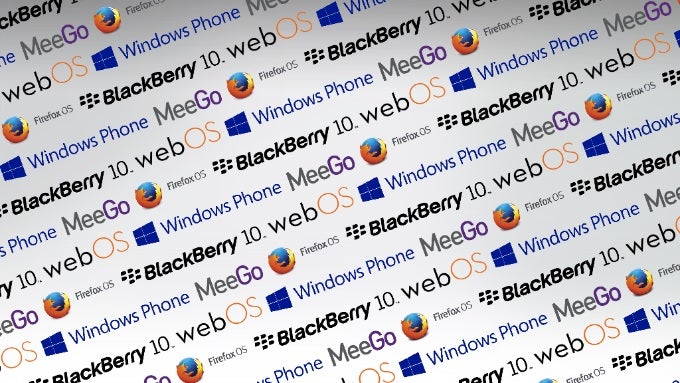
Introduction
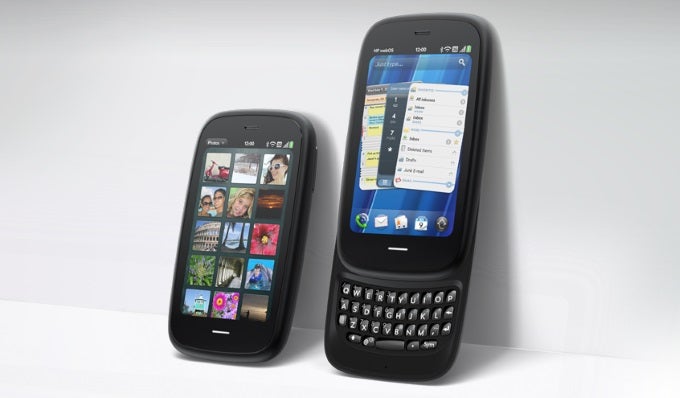
WebOS
History
The year was 2007, and the iPhone – a device that left a lot of people unconvinced at the time, but would ultimately prove to be revolutionary – had just debuted, and someone at Palm had clearly recognized the threat. The company’s solution was to hire Jon Rubinstein, a recent Apple retiree who was partially responsible for the original iPod, and put him in charge of their upcoming phones’ development. Two years later, the Pre, along with WebOS, was debuted at CES 2009, where it became the first non-Apple smartphone to use a multitouch screen. In April 2010, following the lackluster sales of the Pre, Pre Plus and Pixi, HP announced it would buy Palm in its entirety. A couple of phones later, the Palm name was dropped in favor of HP’s, but only two devices were released before the company ultimately scrapped its mobile plans, and along with them, WebOS as a portable operating system.
Features
One of the most interesting things about WebOS was its extensive use of gestures, to the point where devices using the OS had a special gesture area below the screen. Card-based multitasking, which is now considered the norm in mobile computing, made its debut in WebOS. Universal search, which brought results from multiple apps at once, too, was baked right into the OS from day one. A widely advertised feature, Synergy, was WebOS’ answer to the address book, importing data from many sources at once, including social media and email, and then storing it into the cloud. A nice touch was also the inclusion of a PalmOS emulator, called Classic, which allowed backwards compatibility with older apps.
What went wrong
Despite its many positives, things were far from peachy for WebOS and its parent company right from the start. For starters, the Pre was announced just after the company’s worst stock market performance ever, going for as low as $1.42 per stock. While in time that figure increased significantly, it was ultimately not enough, resulting in the HP buyout. Palm’s devices weren’t selling as predicted, and in hindsight it’s easy to see the reason: apps. Or, rather, the lack of apps – who would’ve thought that the very thing that defines the concept of the smartphone is necessary for its success? The Mojo SDK, a.k.a. the thing necessary to build apps for an OS, launched a full month after the Pre did, which is bad enough for any phone, let alone one which launched with just a dozen or so apps. Combine that with Sprint’s lackluster marketing, along with Palm’s unwillingness to branch out and sell the device overseas in a serious manner,
Palm’s devices weren’t selling as predicted, and in hindsight it’s easy to see the reason
and you’ve got yourselves a clear market failure. In the following months, Android skyrocketed in popularity, ensuring subsequent WebOS devices will meet a similar fate.Legacy
Some time after the discontinuation of WebOS by HP, a licensing agreement between them and LG sort of revived the OS, which now powers a number of LG’s smart TVs, along with a variant of the LG Watch Urbane. Also, a successor to WebOS, named LuneOS, is in active development by the open source community, though it’s far from having a widespread adoption. Many of the OS’ features live on, most notably the card-based multitasking, though some of its advanced capabilities, such as card stacking/grouping, have failed to catch on.
Additional reading
- The lost secrets of WebOS – Dieter Bohn / The Verge: An interesting look at Palm’s unfinished hardware and software products from just before HP called it quits.
- Seven years ago, the Palm Pre was primed to take on the Apple iPhone – Alan F. / Phone Arena: A more in-depth perspective on the Pre and the smartphone climate at the time of its release.
- The Short, Sad, And Painful History Of The Palm Pre – Ellis Hamburger / Business Insider: A quick but detailed history of the company in pictures.
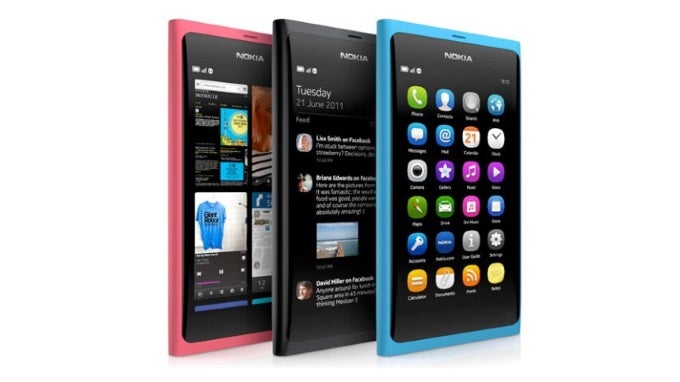
MeeGo
A great example how bad timing can destroy an otherwise good product, MeeGo, the joint venture between Nokia and Intel, managed to launch on something between zero and two phones, depending on how you count. Featuring an interface focused on gestures and simplicity, it was meant to be Nokia’s return to true form in the smartphone era, but ultimately company politics got the best of it. Nokia N9, the only consumer-available smartphone running MeeGo (almost, see below), was essentially dead on arrival, as the now infamous Microsoft/Nokia deal had been announced months ahead of its release, dooming both the device and the OS that powered it.
History
To fully understand MeeGo’s history, one needs to go years back and look at both Nokia and Intel’s past mobile ventures. First there was Moblin (short for mobile Linux), Intel’s fork of the open-source OS designed primarily around their own Atom processors, which were used in a large number of netbooks at the time. Then there was also Maemo, Nokia’s homegrown Linux distro, which primarily powered the company’s own PDAs. At MWC 2010, the two announced the merger of their respective projects into a new one, named MeeGo, which was to be a one-size-fits-all solution for device manufacturers. Besides smartphones, planned devices running the OS included tablets, TVs, and netbooks. Only two phones running the OS, the Nokia N950 and N9, were ever released, and they didn’t even technically run MeeGo at all, but rather a version of Maemo with the MeeGo UX on top of it. Both of them also had limited releases – the N950 was a developer phone with only about 5000 devices manufactured, while the N9 was never released stateside due to Nokia’s new business plans with Microsoft. Intel promptly abandoned the project, which led to a confusing mess of forks and offshoots, but we’ll get to that in a minute.
Features
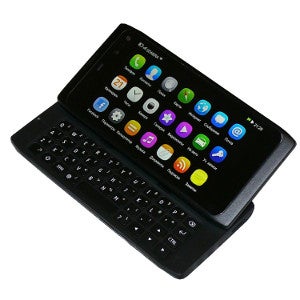
The developer-only Nokia N950
What went wrong
even if it weren’t for the OS’ bad timing, it’s debatable whether it could have ever stood up to its competitors
Boy, where do we start – firstly, there’s the fact that a complete version of the OS was only ever released on an obscure German tablet called WeTab, which also ran a custom user interface on top. The reason for this is that, despite being one of the two main creators of MeeGo, Nokia shipped the N9 and N950 with Maemo 6, work on which had already been underway before the Intel deal took place. The N9 was announced four months after Nokia’s exclusivity deal with Microsoft, and was described by CEO Stephen Elop as the first and last MeeGo device from the company. Elop, an ex-Microsoft executive, was the main driving force behind the platform’s downfall, calling it a “burning platform” in a famous internal memo, and successfully pushing for Nokia’s adoption of Windows Phone (which, coincidentally, is the next platform on our list). However, even if it weren’t for the OS’ bad timing, it’s debatable whether it could have ever stood up to its competitors, which had had a head start of a few years each and were already massively popular with users.Legacy
Mer, originally an open-source re-implementation of Maemo, switched its focus to MeeGo when it was first released, eventually becoming the de facto successor following its abandonment by Nokia and Intel. Mer was then used as a base for two other operating systems, the more famous one being Sailfish OS, which powered a few low-cost phones and tablets, but now can also be considered a market failure. Another OS, Tizen, was announced as a continuation of the MeeGo efforts, but in reality is mostly based on Samsung’s deprecated Bada. Just like Bada, Tizen is used primarily in entry-level smartphones, but has also recently expanded into smart TV sets and wearables.
Additional reading
- Stephen Elop: “Nokia, our platform is burning” - Victor H. / Phone Arena: The full text of the “Burning platform” memo, along with a helpful summary of its contents.
- The story of Nokia MeeGo - Sampsa Kurri / Muropaketti: A much more in-depth look into the platform’s history, detailing many problems encountered during its development.
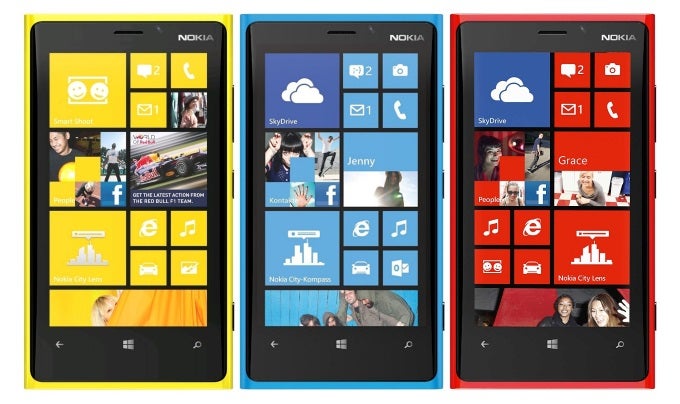
Windows Phone
Like the tech equivalent of a slow mo trainwreck, Windows Phone was headed towards failure right from the start, and all anyone could do was sit back and watch in horror. A pattern of bad decisions and mismanagement managed to turn one of the most compelling OS concepts in the past decade into a convoluted and unfinished mess. While the OS technically lives on to this day, pretty much no one uses it anymore, making it a strong contender for our list. Which is a shame, since Windows Phone could have been so much more, had its core tenets not been diluted by time constraints and gimmicks.
History
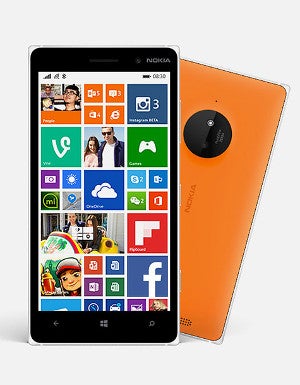
Lumia 830, the last Nokia-branded WP device
Features
First off, let’s get one thing straight – while Windows Phone was never a perfect OS, its looks are unique, even today. Microsoft managed to successfully differentiate itself with a simplistic interface in an era of screens buzzing with unnecessary information, which was a bold move rarely seen in the industry. And this was far from the only good idea Microsoft had for the OS – during the early WP days, there was a concept, dubbed “Hubs”, whose purpose was to aggregate similar types of content in a single, easily accessible place. Live Tiles, a somewhat polarizing feature, combined the functionality of widgets and app shortcuts. The built-in touch keyboard is one of the best ever made, and for a while it actually held the world record for fastest typing on a touchscreen. Later versions of the OS also introduced Cortana, a digital assistant similar to iPhone’s Siri. With time, multiple other, smaller features were implemented to bring the OS on par with its competitors, though they ultimately had little impact on the public’s perceptions.
What went wrong
Ask anyone the above question and you’ll get pretty much the same answer: “it had no apps”. While that is true and widely documented, it isn’t the real reason for the platform’s failure, but rather just a symptom of it. In reality, Microsoft consistently made terrible decisions regarding the OS, starting from way before it was even announced. First off, its first incarnation, Windows Phone 7, was built on top of an aging kernel, Windows CE, the very same that had powered its Windows Mobile platform for more than a decade (an OS’ kernel is its most important chunk of code, which controls all operations taking place on a given system). Threatened by Android and iOS’ success, Microsoft rushed Windows Phone’s development, dropping many essential features, including backwards compatibility with WM, which rendered the choice of Windows CE unnecessary.
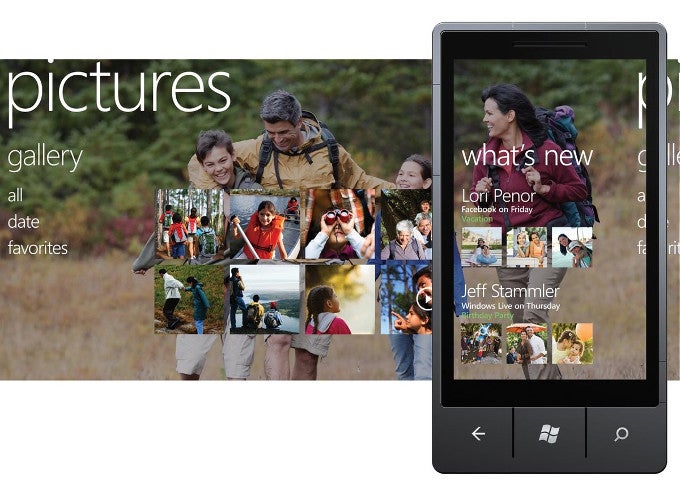
WP7's Pictures Hub
The list of functionality missing at launch includes, but is not limited to: copying and pasting, a notification center, multitasking, tethering, VoIP, custom ringtones, and so much more. While those features were all eventually implemented, their inclusion came at the cost of others’ removal: for example, Hubs – once a main selling point of the platform – were nerfed and eventually removed entirely, with their crippled replacements suffering from bad performance and bugs. Instead of implementing better APIs that are on par with their competitors’, Microsoft chose to add unnecessary new features, such as the (soon to be removed) Kids Corner, further alienating developers already disheartened by Windows Phone’s small install base. And all of this is just scratching the surface – there’s a ton of other factors, like the carrier-dependent software updates, flagships becoming progressively worse in terms of quality, the sabotage tactics employed by Google and a handful of app developers, and more, but those are a topic for another day.
Legacy
Windows Phone’s main success was in its visual design – the combination of flat, bold colors, simple shapes and typography seems to have struck a chord with many people: first off, there’s Microsoft itself – Metro was heavily integrated into the desktop Windows 8, and subsequently Windows 10, though that change was widely criticized for being forced and unnecessary. Secondly, there’s WP’s competing platforms, most of which have since adopted simpler, flat user interfaces – whether this shift was in response to Metro or not is debatable, but Microsoft undoubtedly had the first major platform to feature such a design. Cortana, the digital assistant which debuted with WP8.1, is now available on most major platforms, with Microsoft planning to expand it to third-party developers. As for the OS itself, there have been a few rumors of new devices coming out in the future, but past failures have left us somewhat skeptical.
Additional reading
- Cancelled Lumia McLaren gets unearthed and resurrected for a formal review – Luis D. / Phone Arena: A video review of the canceled Lumia McLaren, which was supposed to be one of the platform’s most important flagships with its unique hover touch capabilities.
- From Photon to the future: A not-so-brief history of Windows Phone – Andy Weir / Neowin: A much more detailed history of the platform, which also covers Microsoft’s multiple marketing problems.

BlackBerry 10
Once the enterprise’s darling, for the past few years BlackBerry has been gradually becoming just a shadow of its former self, to the point of giving up on consumer hardware entirely and licensing its brand name. Before that, however, it tried a few strategies to save itself, including embracing Android, following the failure of its last homegrown OS, BlackBerry 10. BB10 wasn’t bad in many ways, and, in fact, had a few very interesting ideas, and also managed to get most of the basics right. It wasn’t the OS’ own failings that doomed it, really, but rather its parent company’s, which had lost most of its customers long before that.
History

The BlackBerry Inter@ctive Pager 850, the company's first device
Features
In our review of the OS, we couldn’t help but point out the similarities between it and WebOS – both systems run on a single manufacturer’s devices, both make good use of gestures for navigation, both of them offered a new multitasking solution, and so on. Obviously, having come out years later, BlackBerry 10 was far more advanced, and a bit more aware of users’ expectations. The OS had a few tricks up its sleeve – for example, there’s the BlackBerry Hub, which combined all messages, calls, and notifications in a single list. Multitasking also received an overhaul, letting a minimized app turn into a so-called “Active Frame”, which could be either a resized version of the original app, or a separate, widget-like user interface providing some basic functionality. Since the OS was intended to be used in an enterprise setting, BlackBerry also added a so-called Balance functionality, which separated personal and work data and apps, similar to switching users on a desktop PC.
What went wrong
there’s also the app problem, which is the big reason why casual users never flocked to the platform
After the many years BlackBerry was complacent with its user base, despite its dwindling size, the debut of BB10 was simply too little too late, despite all the improvements it offered. Being locked in to an unstable platform seems to have been a problem even for the enterprise, where traditional market rules don’t normally apply as much. Then, of course, there’s also the app problem, which is the big reason why casual users never flocked to the platform, which in turn discouraged developers, creating a vicious cycle. The OS’ exclusivity to BlackBerry devices, while traditionally not a problem, certainly didn’t help on this occasion. And lastly, just four months after BB10’s release, BlackBerry announced it would make its messaging app, BlackBerry Messenger, cross-platform, taking away one of the most important exclusive features of the operating system.Legacy
As of now, the OS is still updated semi-regularly, but receives only security patches, rather than new features. The company has officially ceased development on BlackBerry 10, and has released three other devices with a fourth one in the pipeline, all of which run Android. After its repeated hardware failures, BlackBerry sold the right to its name to TCL Corporation, which is also likely to continue this trend, rather than switch back to BB10. Devices with a physical keyboard, once a staple of the company, are also next to nonexistent, though the yet-to-be-released BlackBerry Mercury is guaranteed to have one.
Additional reading
- The Rise and Fall of BlackBerry: An Oral History – Felix Gillette, Diane Brady, Caroline Winter / Bloomberg: A history of the company, as told by its employees.
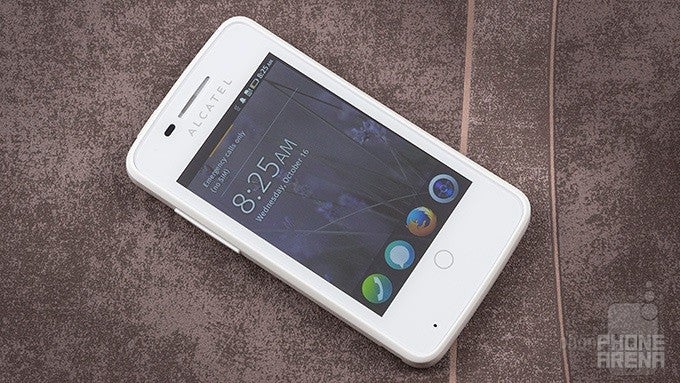
Firefox OS
For most readers, the most surprising news about Firefox OS isn’t that it failed, but rather that it even existed in the first place. The web-first platform’s target devices were never high-end ones, but instead entry-level smartphones and tablets primarily sold in developing markets, which explains its relative lack of public visibility. Still, it’s somewhat sad the OS met such an untimely end, as it had a very interesting approach to app development and distribution.
History

The Boot to Gecko logo
Features
Unlike more traditional operating systems, where apps have to be specifically built for a given platform, while relying on its specific functionality and design, Firefox OS approached the situation in a much more open way. Every app on the OS runs exclusively using web technologies – HTML, CSS, and Javascript, which would wildly reduce the difficulty curve associated with moving to a new platform, while also opening up new functionality for all web developers. Otherwise, the OS mostly followed industry standards regarding design and functionality, though it did make some unique changes, such as dedicating a whole section of its home screen to app discovery.
What went wrong
In hindsight, it’s easy to see the things the Mozilla Foundation got wrong – they were primarily targeting developing markets, but failed to account for the fact that people everywhere love having extra functionality. Competitors, the biggest of which was Android, have a much bigger app ecosystem, along with many optional features, both things Firefox OS, with its adequate yet barebones user experience, couldn’t offer. It certainly didn’t help that the OS suffered from a large number of bugs, and that phones running it were severely underpowered, even for budget devices. When all those factors are taken into account, it becomes clear that Firefox OS was doomed from the start, which was an easy conclusion to reach even for many of the more tech-illiterate customers, which also happened to be the system’s target group. Of course, even if all of the above problems were solved, it’s hard to imagine a new operating system successfully competing against Android and iOS, especially one coming from a nonprofit with little experience in the field.
Legacy
While the Firefox OS project is officially dead, as it often happens in the open source community, there are a couple of attempts at its resurrection. The first one comes from Panasonic, who use a fork of the OS to power some of their Smart TVs. The second one, which was also a much more direct successor, was called H5OS, and was built by Acadine Technologies, a company founded by Mozilla developers who previously worked on the project. Their plan was to continue working with smartphone manufacturers, and release devices running their fork of Firefox OS. However, after not receiving funding from a contract, the company laid off most of its employees and ceased work on the project.
Additional reading
- B2G OS and Gecko Annoucement – Ari Jaaksi, David Bryant: The original announcement of Firefox OS’ discontinuation, as posted to the mozilla.dev.fxos mailing list.
- Why the death of the Firefox phone matters – Stephen Shankland / CNET: An obituary for the OS, outlining its development problems and its failure’s future repercussions.
Follow us on Google News











Things that are NOT allowed:
To help keep our community safe and free from spam, we apply temporary limits to newly created accounts: